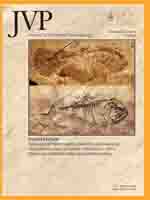Three species of the genus Pseudopus are recognized in the Cenozoic of Eurasia: P. laurillardi (early—middle Miocene of Europe), P. pannonicus (late Miocene—middle Pleistocene of Central and Eastern Europe), and P. apodus (late Pleistocene—Recent, from Eastern Europe to Central Asia). Here, a new and oldest species of the genus Pseudopus, P. ahnikoviensis, sp. nov., is described from the early Miocene (MN 3) locality Merkur in Northwest Bohemia in the Czech Republic. The new species is distinguished from the other three species of the genus Pseudopus by five possible autapomorphies: length of sulcus between frontal and frontoparietal shields equals length of sulcus between frontal and interfrontal shields; ornamented surface of parietal consisting of densely arranged and very fine ridges, grooves, and pits; ventrolateral ridge of supratemporal process of parietal coincides with lateral margin of supratemporal process, hence no free ventrolateral surface of supratemporal process present; presence of surangular spine of dentary; and apices of crowns of robust bulbous teeth smooth. Pseudopus ahnikoviensis is most similar to P. laurillardi and represents the smallest species in the genus Pseudopus.
How to translate text using browser tools
1 July 2012
A New Species of Pseudopus (Squamata, Anguidae) from the Early Miocene of Northwest Bohemia (Czech Republic)
Jozef Klembara
ACCESS THE FULL ARTICLE

Journal of Vertebrate Paleontology
Vol. 32 • No. 4
July 2012
Vol. 32 • No. 4
July 2012




